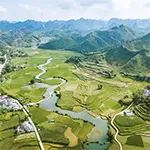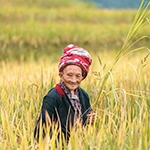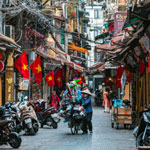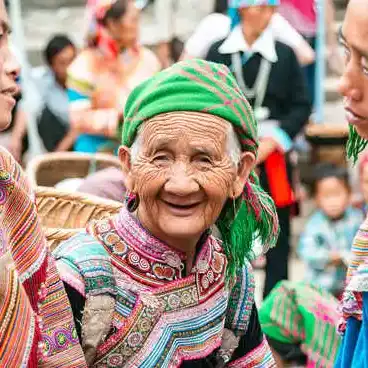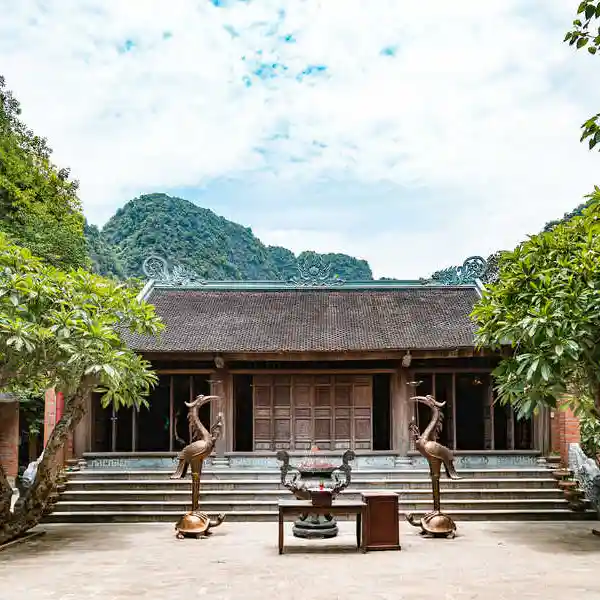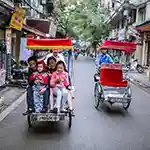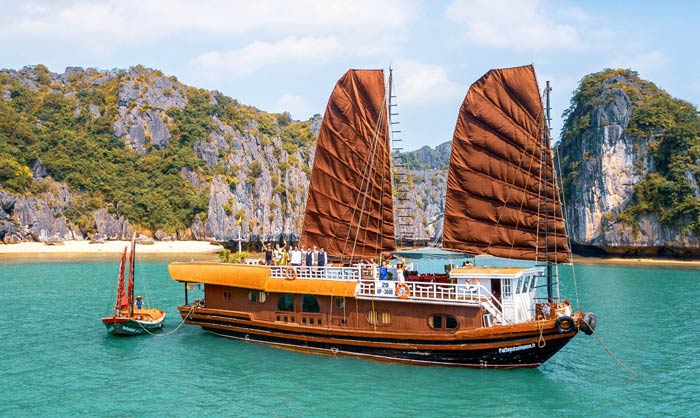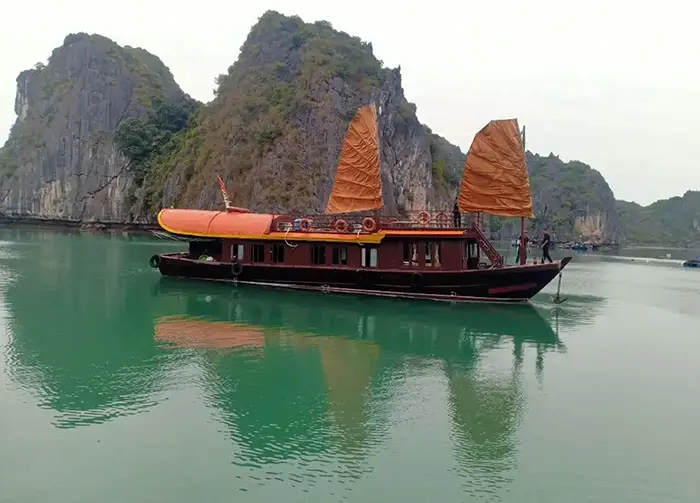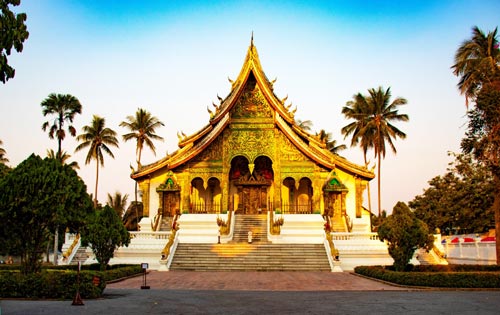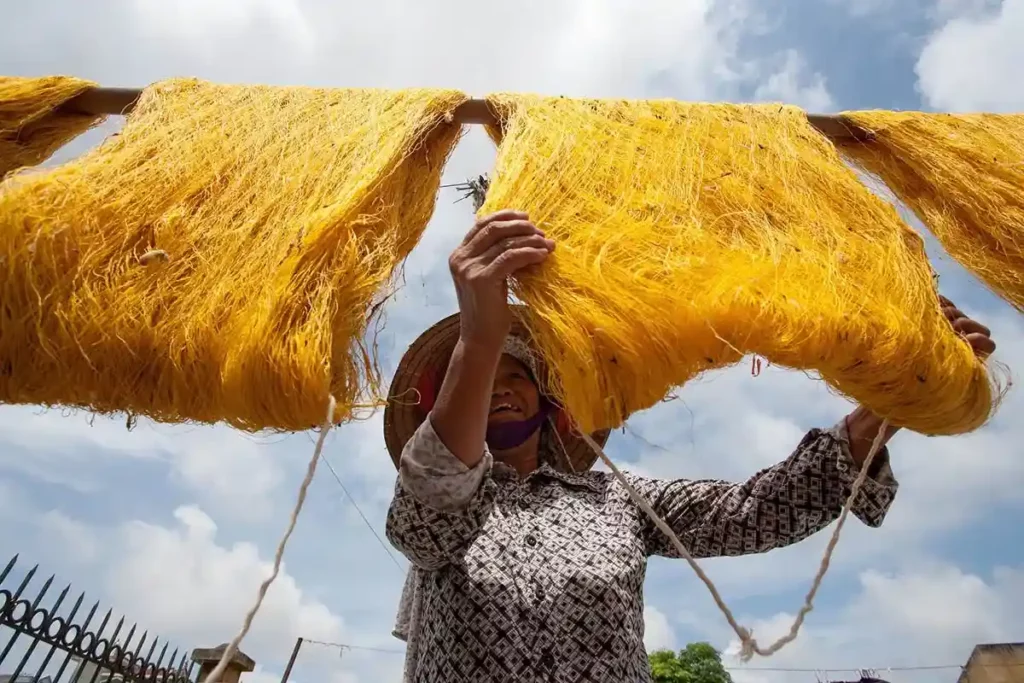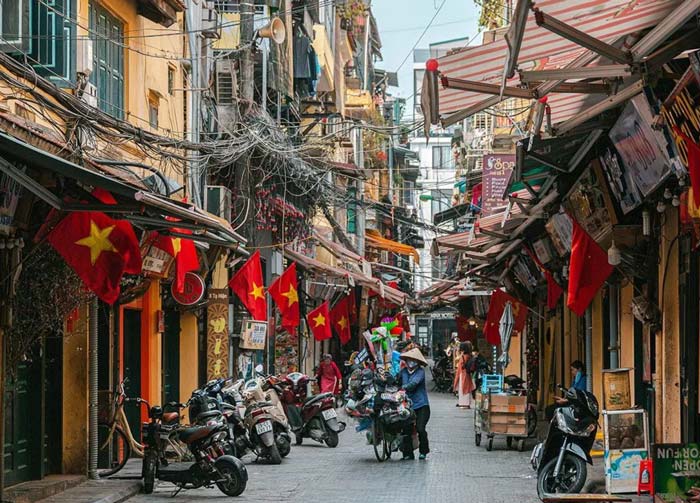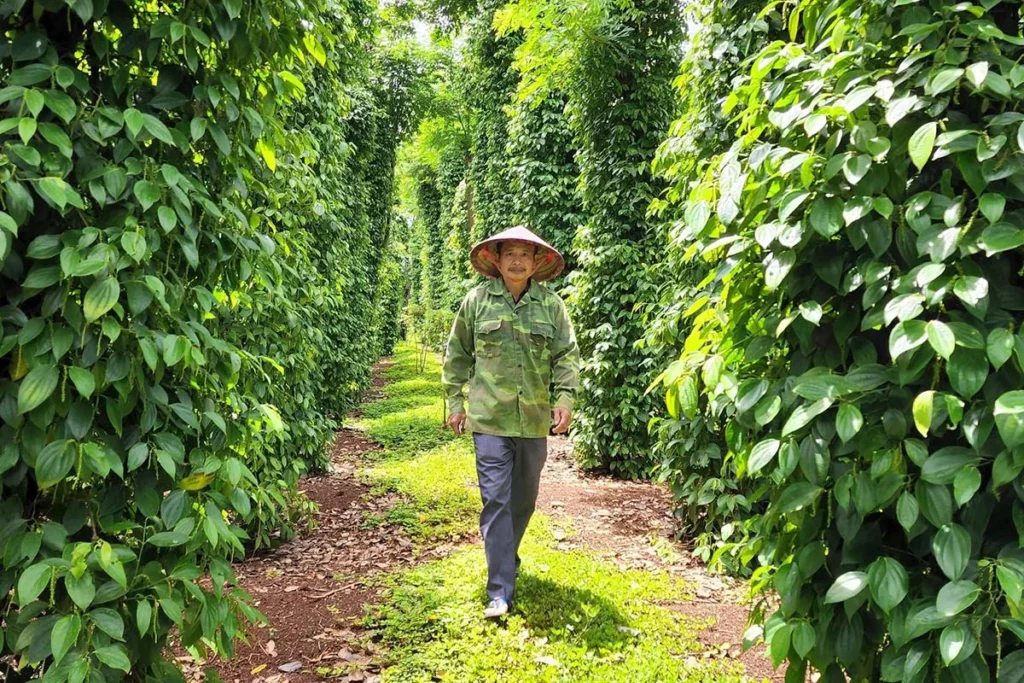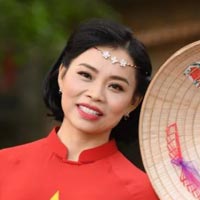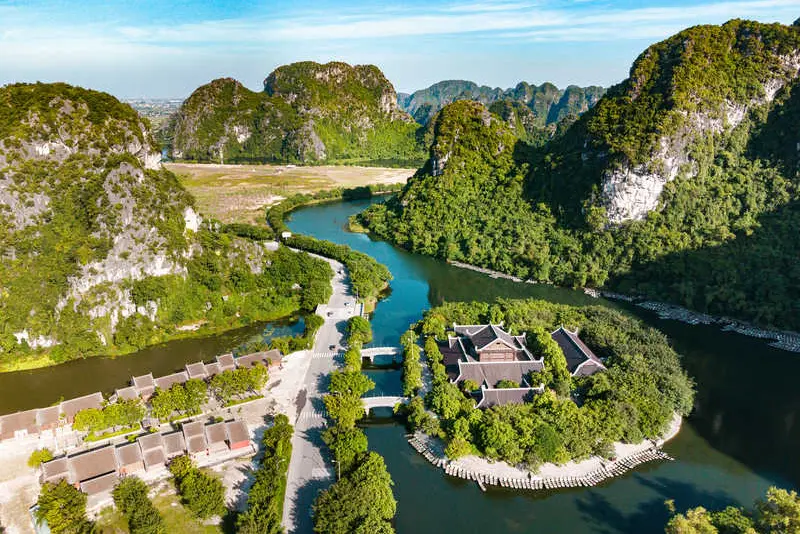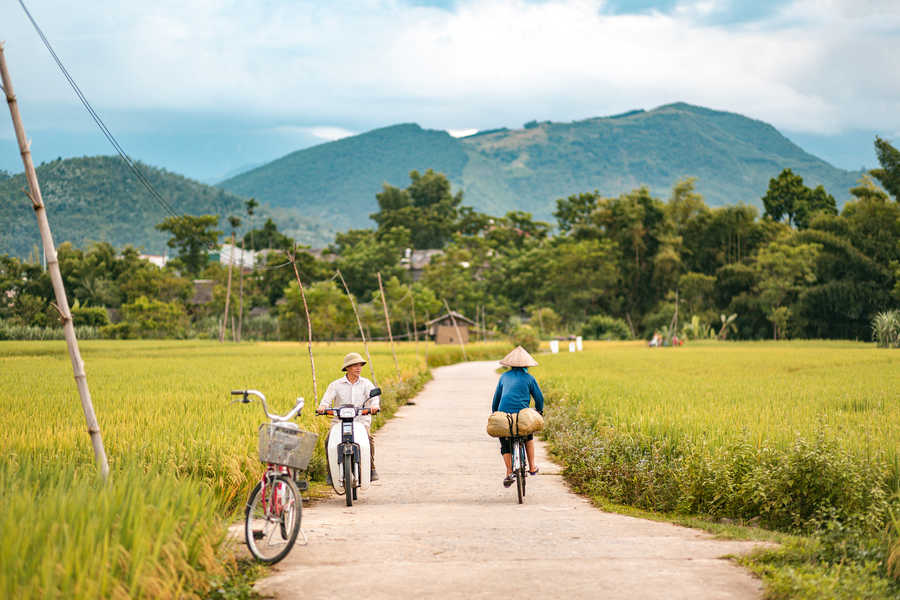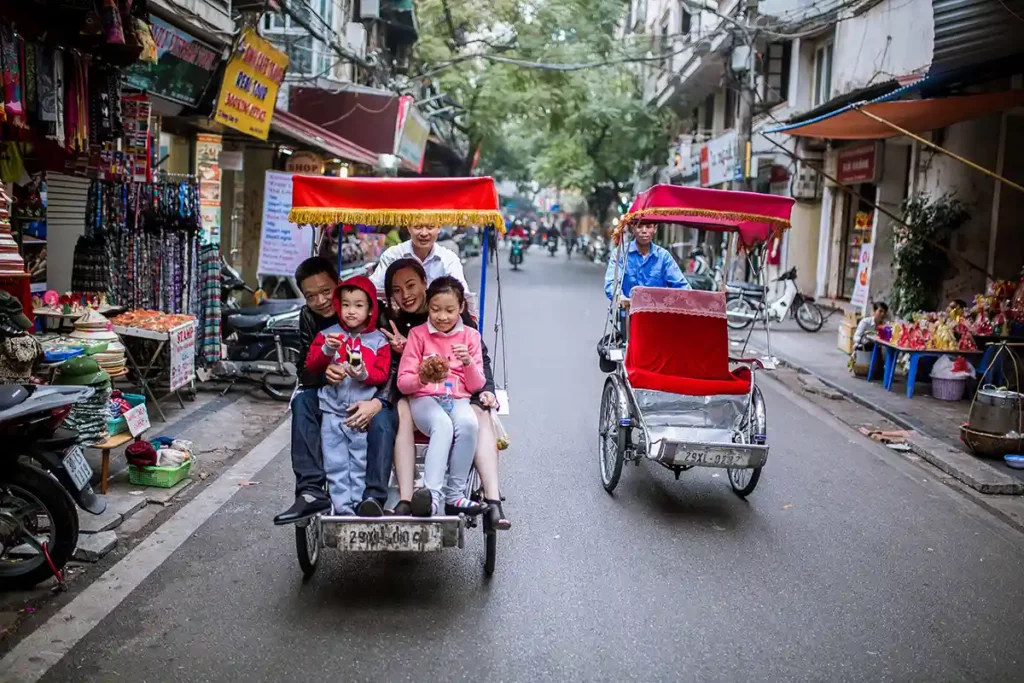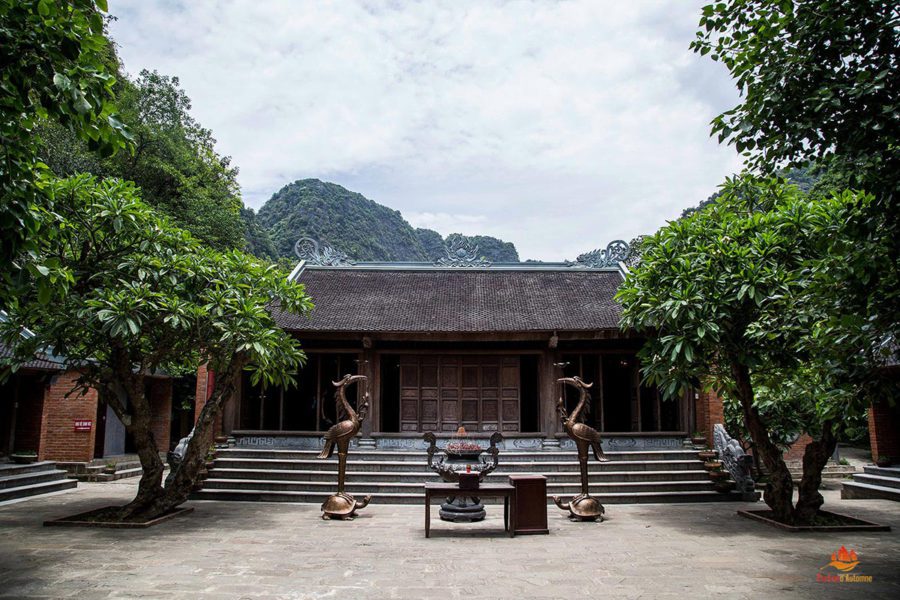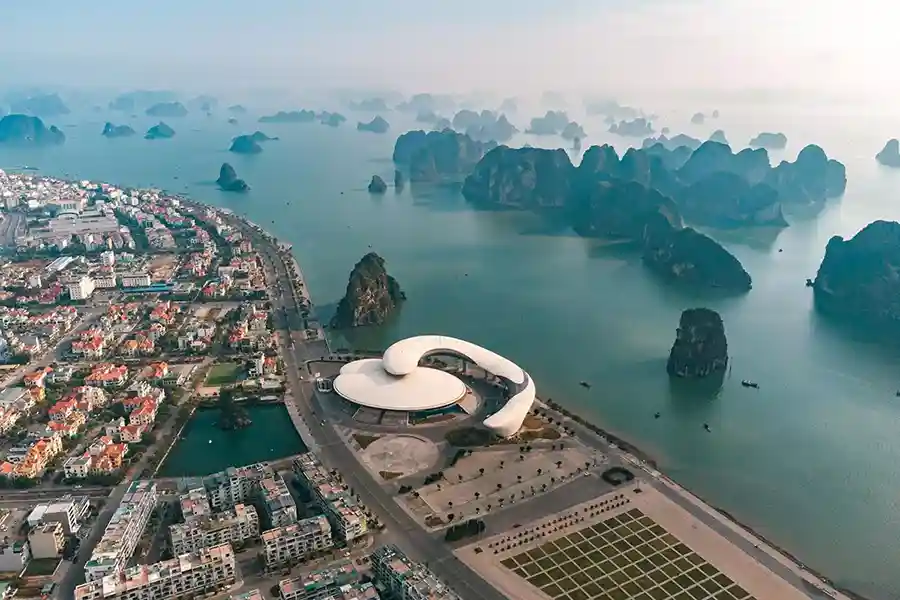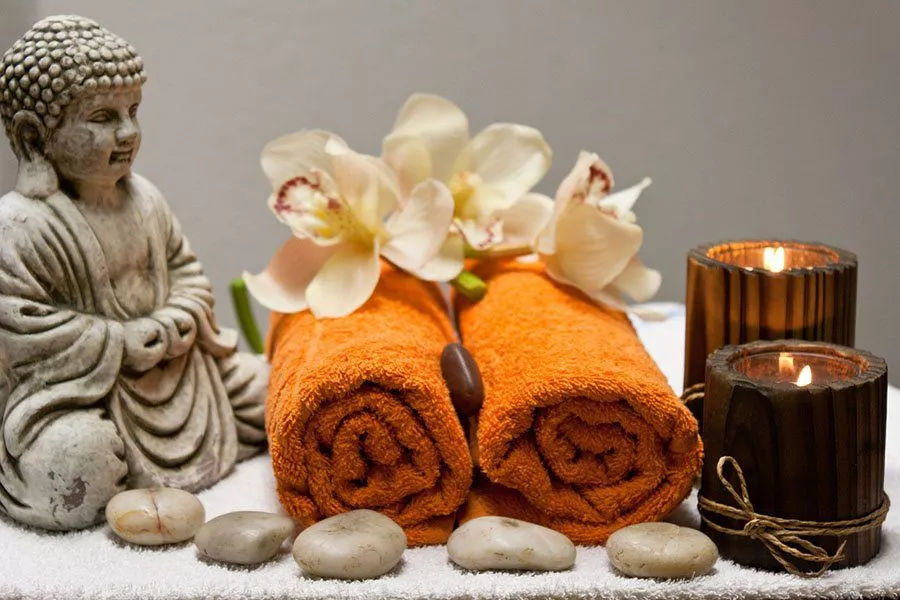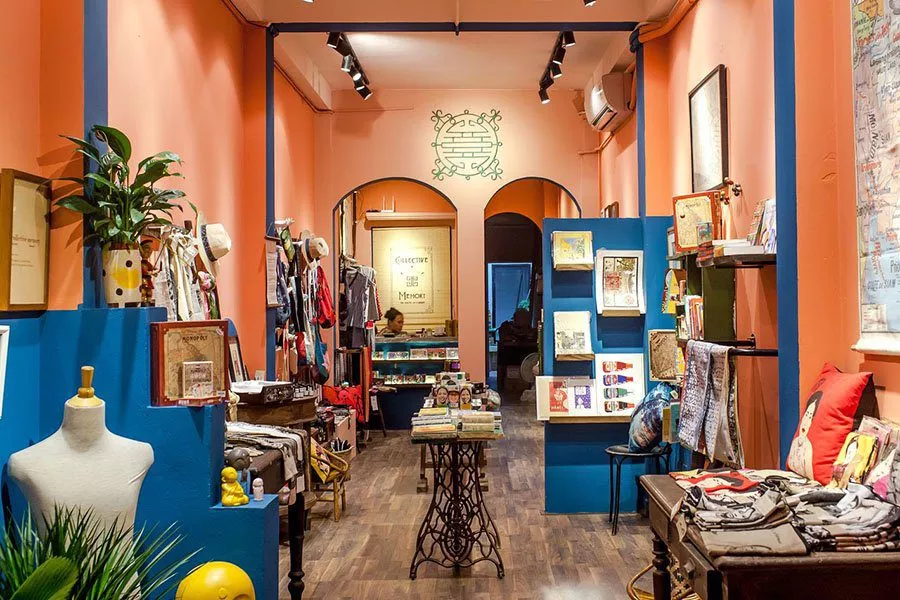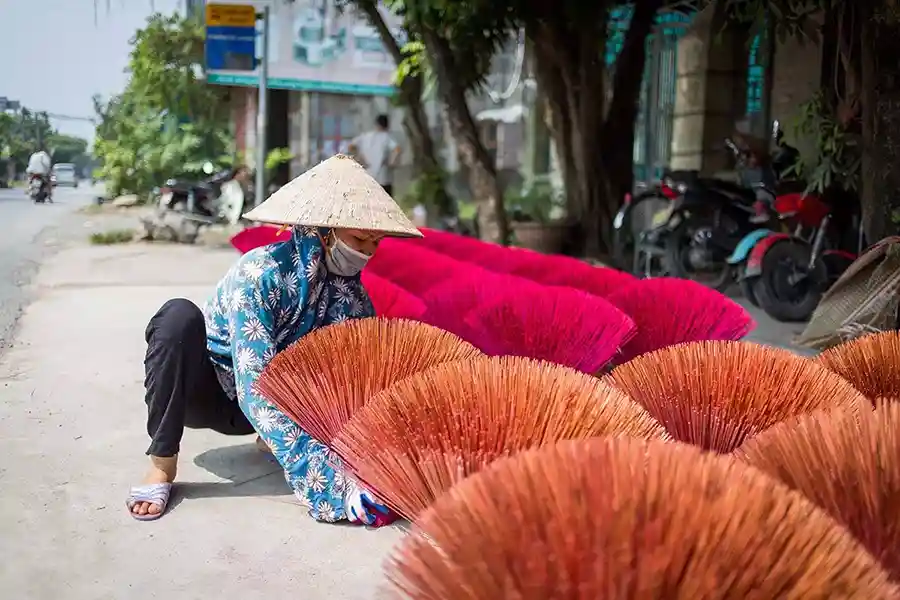Vietnamese silk is a precious material with a long and rich history. Silk fibers have been used to make clothing, upholstery, and decorative items for thousands of years. In Vietnam, silk was long considered a luxury product, often associated with nobility and the upper classes.
In this article, we’ll look back at its history, the role of silk in Vietnam’s economy today, the production process, and the best places to buy silk fabrics or dresses.
A brief history of silk in Vietnam
It’s not entirely clear where silk production began in Vietnam, as there is little historical evidence on the subject. However, it is believed that silk production in Vietnam dates back more than 2,000 years, making it one of the country’s oldest traditional crafts.
According to Vietnamese legends, silk was introduced to Vietnam by a Chinese princess from the Han dynasty who married a Vietnamese prince in the 2nd century BC. She is said to have brought with her silkworms and silk-making techniques, which were then adopted by local communities.
It is also possible that Vietnam’s silk production was influenced by trade exchanges with neighboring countries such as India, Cambodia, and Laos, where silk was also produced.
Whatever its exact origins, silk production became an important economic activity for rural Vietnamese communities, which over time developed unique techniques for silk production and dyeing.
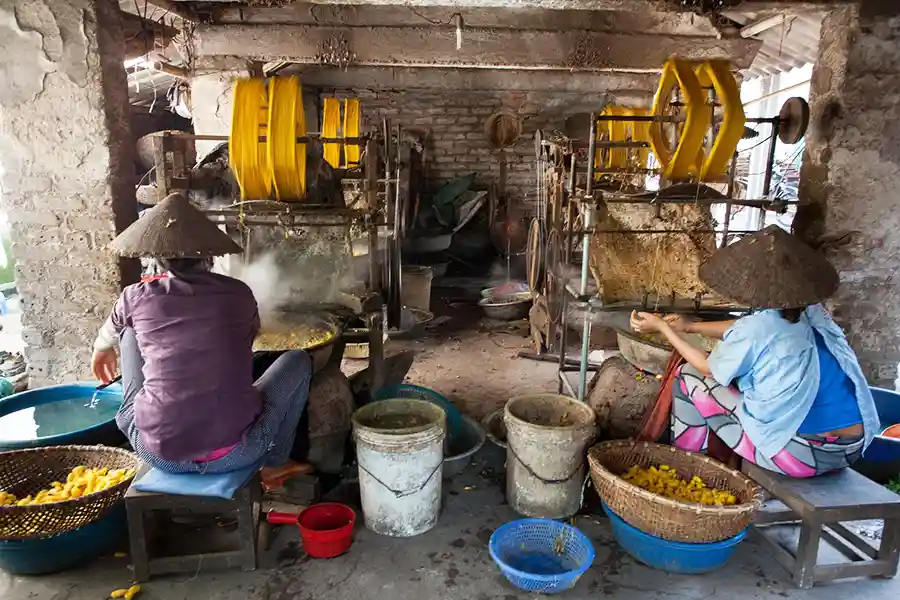
Women weaving silk fabric, Vietnam. Photo credit: Pixabay stock
It was under the Ly dynasty (1009–1225) that silk production became a true industry in northern Vietnam. At that time, silk was produced in the Red River region and used for imperial court garments as well as for trade with China.
Over time, silk production spread throughout the country, becoming an important economic activity for rural Vietnamese communities. Silk-making techniques were passed down from generation to generation, and Vietnamese silk became renowned for its superior quality and artisanal craftsmanship.
During the French colonial period, silk production in Vietnam was boosted by the creation of modern production centers and the introduction of advanced machinery and technology. However, silk production declined after Vietnam’s independence due to war and political instability.
In the 1980s, the Vietnamese government began investing in the development of the silk industry by establishing state-owned enterprises and silk production cooperatives. Training programs and technical support were also implemented to help silk producers improve both productivity and quality.
In recent decades, Vietnamese silk production has experienced a renaissance, with growing demand for high-quality silk products on both domestic and international markets. Silk producers have also adopted sustainable and environmentally friendly practices, such as using plant-based natural dyes and raising silkworms on mulberry leaves—a plant that grows easily without the need for pesticides or herbicides.
Today, Vietnamese silk is regarded as one of the finest in the world, offering a wide variety of silk products ranging from scarves and clothing to tapestries and art pieces.
The process of making Vietnamese silk
The production of Vietnamese silk follows a multi-step process that requires time, patience, and artisanal expertise. Here are the main steps:
Silkworm farming: It all begins with the breeding of silkworms. Silkworm eggs are placed on mulberry leaves, which are their main food source. The worms grow and eventually turn into cocoons, which are then boiled to kill the worms and extract the silk thread.
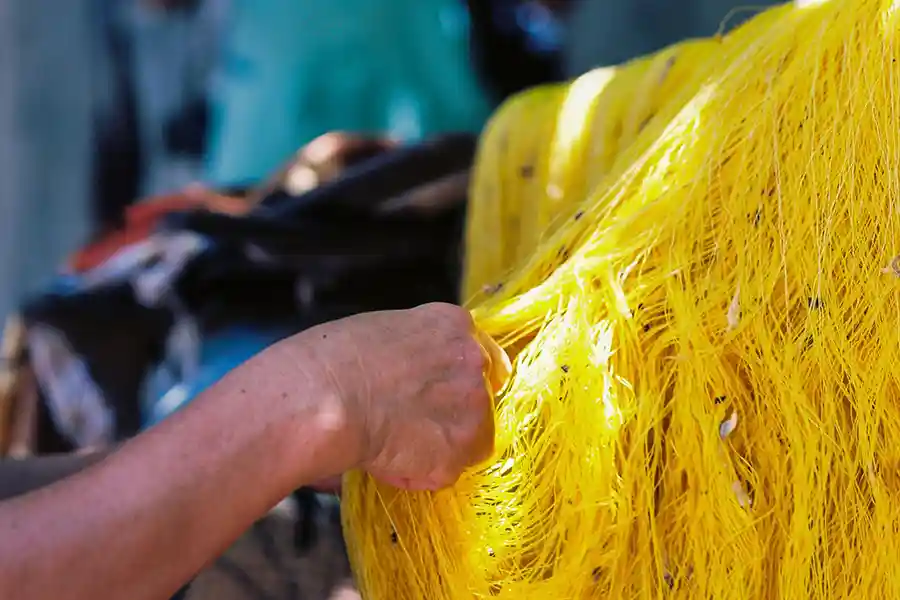
Silkworms in Van Phuc Village, Hanoi. Photo: Mathieu Arnaudet
Silk reeling: Once the cocoons have been boiled, they are collected and immersed in hot water to soften the natural glue that holds the silk thread wrapped around the cocoon. The threads are then carefully reeled using a brush to prevent breakage.
Silk spinning: The silk threads are then gathered and twisted to form thicker, stronger threads. This process is known as silk spinning.
Silk dyeing: The silk is then dyed using either natural or synthetic dyes. Natural dyes come from plants, roots, and other organic materials, while synthetic dyes are chemically produced.
Silk weaving: The dyed silk threads are woven on looms to create silk fabrics. Vietnamese artisans use different patterns and weaving techniques to produce unique designs and varied textures.
Finishing: The silk fabrics are then finished by washing, cutting, and ironing to give them a smooth and shiny appearance.
At every stage, Vietnamese artisans employ traditional techniques to create high-quality silk products, prized for their beauty and durability.
The Importance of silk in Vietnam’s economy today
As you may have gathered, the silk sector remains an important part of Vietnamese culture and economy, providing employment for thousands of people in rural areas. Silk production in Vietnam is still largely artisanal, often taking place in small family-run workshops where traditional techniques are used to create high-quality silk.
Vietnamese silk production primarily targets the domestic market and direct sales to tourists. Official figures show that silk production in Vietnam has grown in recent years, rising from around 2,500 tons in 2010 to nearly 4,000 tons in 2019. While this represents a relatively small share of global production, it still demonstrates that Vietnam plays an important role in the silk market.
The Vietnamese silk sector is also significant for exports. Key export markets include the United States, the European Union, China, and Japan. Silk products exported from Vietnam generated more than $300 million in revenue in 2020, according to official statistics. While this remains small compared to China, which holds 80% of the global market, Vietnam is recognized as a notable silk producer, particularly known for the superior quality of its artisanal silk.
The main silk-producing regions in Vietnam are in the north, notably Ha Dong and Van Phuc provinces near Hanoi, and Binh Duong province in the south. Vietnamese silk is valued for its soft and lightweight texture, as well as its durability and strength.
The Ao Dai, an iconic silk tunic
Among the finished products made from silk is, of course, the famous ao dai, the traditional tunic now worn almost exclusively by women.
This elegant, form-fitting dress, with its high collar and side slits, is considered a symbol of Vietnamese fashion and is often worn on special occasions such as weddings and formal ceremonies.
Vietnamese silk is a popular material for making the ao dai due to its lightness, softness, and sheen. Silk is a natural, breathable fabric that is comfortable to wear even in hot and humid weather. Additionally, Vietnamese silk is often hand-dyed with natural dyes, giving silk garments a unique texture and vibrant color.
Creating an ao dai from Vietnamese silk requires artisanal skill and meticulous attention to detail. The silk fabric is first cut into pieces that are then assembled to form the dress. Vietnamese tailors use traditional sewing techniques to create invisible seams and delicate hems, enhancing the natural beauty of the silk.
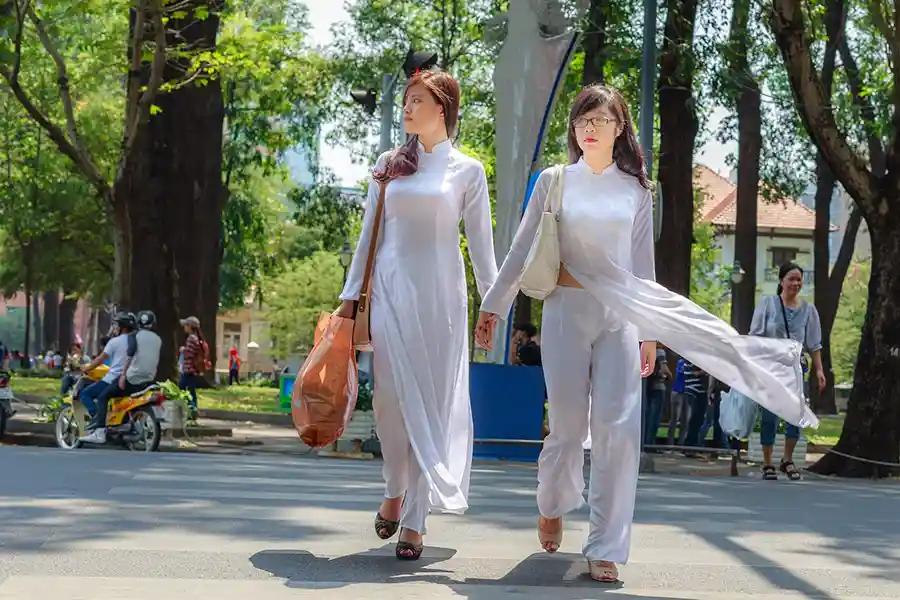
Young girls wearing silk ao dai. Photo: Pixabay stock
The Vietnamese silk ao dai is a symbol of Vietnamese elegance and sophistication. Traditional patterns and delicate embroidery add a touch of art and culture to these garments, which are often passed down from generation to generation. Moreover, the silk ao dai is also an important export product for Vietnam’s fashion industry, attracting buyers from around the world with its unique charm and superior quality.
Where to buy silk?
Craft villages
These are, of course, the best places both to understand the production process and to purchase fabrics or finished products.
Here are some of the most well-known:
Van Phuc – Van Phuc is a silk village located about 10 kilometers from the center of Hanoi. Once a standalone village, Van Phuc is now a suburb of the Vietnamese capital. The residents of Van Phuc have a long history of producing high-quality silk. While the village may no longer have the charm of the past, its silk products remain renowned for their elegance and durability.
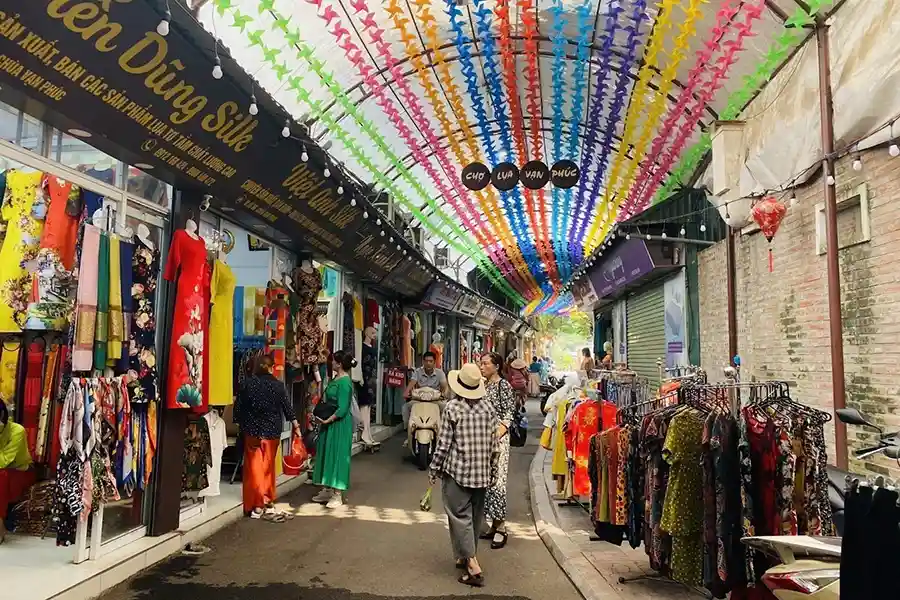
Nha Xa – Nha Xa is a small silk village located in Thai Binh province. Local artisans use traditional techniques to hand-dye and hand-weave silk. Nha Xa silk products are known for their exceptional quality and unique patterns.
Tan Chau –Tan Chau is a small silk village in An Giang province. The residents of Tan Chau are renowned for their skills in silk weaving and the production of traditional Vietnamese garments, such as the ao dai.
Cham Island – Cham Island is a small archipelago off the central coast of Vietnam. The island’s inhabitants are known for their artisanal silk production, using traditional dyeing and weaving techniques
Workshops and shops in Hoi An
Hoi An is more than just a village and deserves a closer look. Located in Quang Nam province, this charming small port town is an ideal place to explore the history of Vietnamese silk and purchase silk products. Local artisans use traditional techniques to create unique patterns and designs.
Most notably, in Hoi An, you can have a custom-made silk dress. Here are some tailoring workshops:
Yaly Couture : Yaly Couture is one of Hoi An’s most famous tailoring workshops, with over 20 years of experience. They are known for their professional service and high-quality workmanship and have been featured in several international fashion magazines.
A Dong Silk : A Dong Silk is another popular tailoring workshop in Hoi An, offering a wide variety of high-quality silk fabrics. They provide custom-made clothing for men and women, as well as silk accessories like scarves and ties.
Kimmy Tailor: Kimmy Tailor is a well-established tailoring workshop in Hoi An with a team of skilled artisans. They offer custom clothing for men and women, along with leather goods, shoes, and jewelry.
If you want to purchase finished products, here are some notable silk shops:
Hoi An Silk Village: Hoi An Silk Village is a complex of shops offering a wide range of high-quality silk fabrics. Visitors can also learn more about the history and production process of Vietnamese silk by visiting the silk museum located in the village.
Reaching Out: Reaching Out is a fair-trade silk shop in Hoi An offering high-quality silk fabrics made by Vietnamese artisans. Visitors can also learn about the history of Vietnamese silk by visiting the shop.
Thu Thuy Silk: Thu Thuy Silk is a long-established silk shop in Hoi An, offering a large selection of premium silk fabrics. They also have their own on-site tailoring workshop to create custom silk clothing and accessories.
Le Minh Silk: Le Minh Silk is a well-known silk shop in Hoi An, offering a variety of silk fabrics, from raw silk to printed silk. They also have their own tailoring workshop for creating custom silk garments.
Shops in Hanoi
Voici quelques adresses pour vous procurer des vêtements en soie à Hanoi.
Here are some addresses where you can purchase silk clothing in Hanoi.
Hang Gai Street: Simply put, this street is known as Hanoi’s silk street and is home to many silk shops, including Tan My Design.
Cathedral Street (Nha Tho): Located near St. Joseph’s Cathedral in Hanoi, this street offers a wide variety of silk products, including clothing, scarves, and accessories. Popular shops here include Van Phuc Silk, Duc Loi, and Thanh Ha.
Dong Xuan Market: This is Hanoi’s largest market and offers a wide range of products, including silk clothing. Visitors can find silk fabrics at affordable prices here.
Hang Da Market: Located in the Hoan Kiem district of Hanoi, this market also offers a variety of silk products, including clothing, scarves, and accessories. Popular shops here include Khai Silk, Ha Dong Silk, and Trang Tien Silk.
Shops in Ho Chi Minh City
In the southern metropolis, you can likely find what you’re looking for at these two locations:
Saigon Square: A very popular shopping center offering a wide variety of products, including silk clothing. Visitors can find silk fabrics at affordable prices here.
Tan Dinh Market: Located in District 1 of Ho Chi Minh City, this market offers a wide range of silk products, including clothing, scarves, and accessories. Among the shops, we recommend Thai Tuan Silk.
Now you know everything about the history and significance of silk in Vietnam. Happy shopping!

